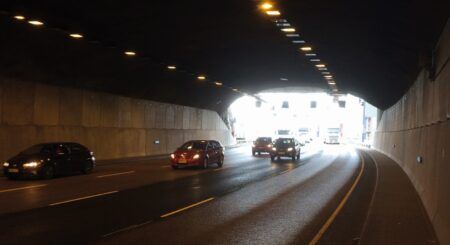Together for Safer Roads (TSR), a global NGO focused on building cross-sector partnerships to improve fleet trucking safety, has launched a new guide including tools and resources to address blind zones in commercial trucks, enhancing road safety for all.
The guide, called the Direct Vision Transition Guide: An Operator’s Guide to Transforming Fleets for Safety, is the first of its kind in North America and offers a comprehensive roadmap to reducing crashes, fatalities, and injuries by enhancing driver visibility.
The guide was written to provide fleet operators in the public and private sectors with clear, one-stop-shop information on why visibility is an issue and what they can do about it and draw awareness to the role that driver visibility plays in roadway fatalities in the US.
It offers fleet operators step-by-step directions for measuring the visibility of vehicles in their existing fleet, using TSR’s 5-Star Rating Tool, and identifies direct vision vehicles that are available on the US market. The guide also spotlights fleet operators and manufacturers who are leading the way to safer streets by adding direct vision trucks to their fleets.
“The Direct Vision Transition Guide demonstrates the power of collaboration that is the foundation of our work,” said Peter Goldwasser, executive director of Together for Safer Roads. “Members have contributed their valuable expertise in fleet management and truck design, as well as road testing the Direct Vision 5-Star Rating Visibility Tool. Together we have created a comprehensive resource that brings us closer to the shared vision of safer roads for all.”
According to the new guide, public and private fleet operators can reduce roadway crashes, fatalities, and injuries by including direct vision trucks in their fleets. Data from London, where trucks have been required to meet a Direct Vision Standard since 2019, shows a 75% reduction in fatal crashes and a 64% reduction in crashes causing severe injuries where vision was a factor.
Furthermore, direct vision trucks are much safer than conventional cabs. Studies found that driving a traditional cab resulted in a 23% increase in pedestrian collisions versus trucks optimized for direct vision.
“The report will raise awareness on how fleet operators in the US can reduce traffic fatalities and injuries by improving driver visibility. Buying trucks that are designed to increase/improve what the driver can see directly from the drivers’ seat will reduce crashes, fatalities, and injuries,” added Goldwasser.
The Direct Vision Transition Guide identifies direct vision vehicles that are available in the US market and spotlights fleet operators and manufacturers who are investing in safety. This information illuminates the connections forged between fleet operators and vehicle and technology developers and manufacturers.





